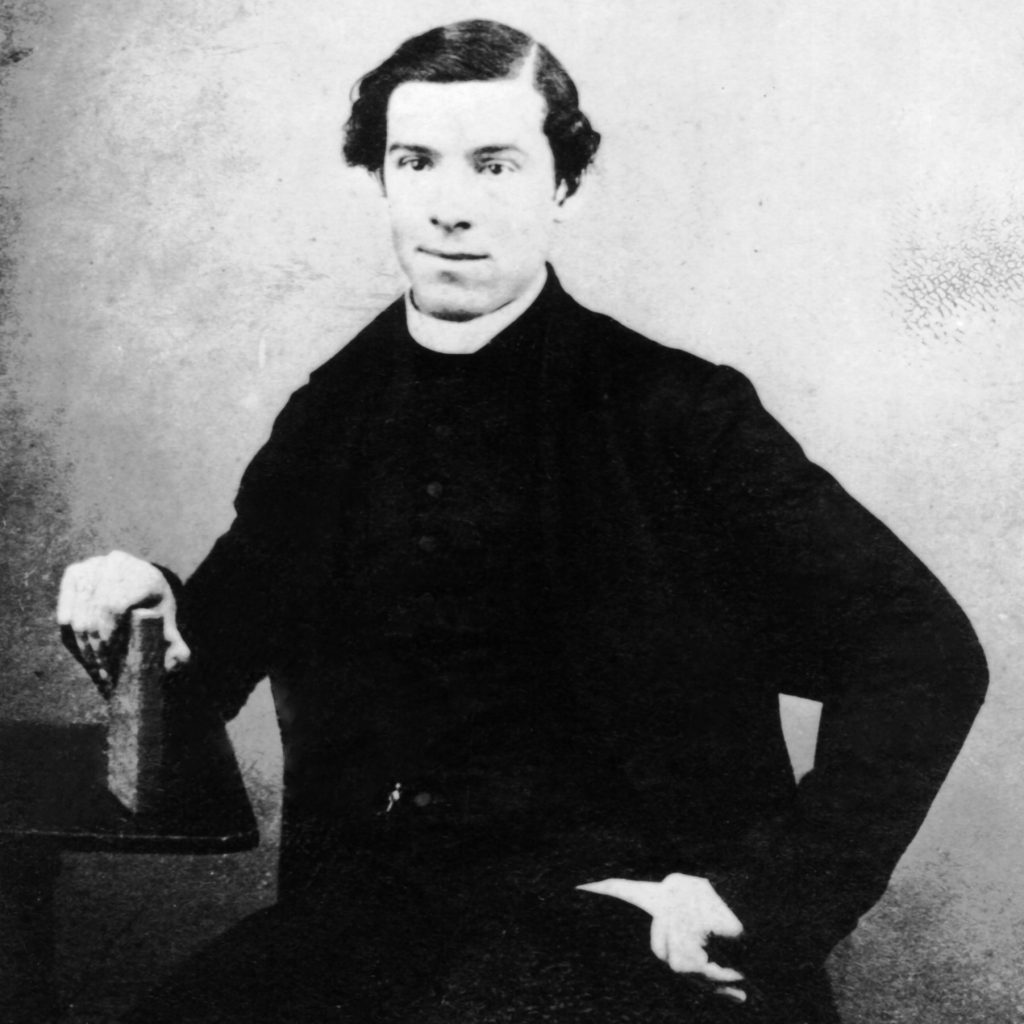
We celebrate the feast of All Saints on 1 November with a reflection by Sr Jan Tranter.
Drawn to priesthood from youth and struggling to his goal, Julian Tenison Woods was encouraged by three priests who are now recognised or on the path to be recognised as saints.
Venerable Ignatius Spencer, St Peter Julian Eymard and St Jean Marie Vianney, each affirmed Julian in his journey to priesthood. Canon Frederick Oakeley stands with them, encompassing Julian’s contact with the other three.
Fr Ignatius Spencer
Declared Venerable by Pope Francis in 2021, Fr Ignatius was born into a wealthy family, (that of Diana Spencer and Winston Churchill), enjoyed a privileged education and was ordained in the Church of England.
Ordained as a Catholic priest in Rome in 1832, he returned to England, joined the Passionists and gave missions with outstanding care for the poor. In Southwark in 1850, he met seventeen-year-old Julian. ‘He put his arms around me,’ said Julian, ‘and pressed me to his heart’.
On Julian’s speaking of his ‘longing desire to devote myself to the Church’, Fr Ignatius encouraged him and gained James Woods’ agreement for his son to join the Passionists.
When ill as a novice, Julian was sent for a change to a monastery where Fr Ignatius was the Superior. Fr Ignatius’ encouragement continued, but Julian’s poor health led to his reluctantly leaving the Passionists.
St Peter Julian Eymard

Soon Julian was in France studying as a Marist, as arranged by the Marists. From Lyon, he visited the Auvergne and met Sisters of St Joseph, with enduring consequences in his foundations in Australia. He then studied at Montbel, where his health failed.
From Montbel he came to La Seyne-sur-Mer, where Fr Eymard was the Superior. This period was ‘among the happiest of my life’. Julian enjoyed theology, natural science, excursions with a leading botanist, and teaching English, but his health was poor.
Fr Eymard inspired him. ‘Of all the different people I have met with in life, he is the one who has left the deepest impression on my mind… He always encouraged me… that my bad state of health…. was some special design of God connected with my vocation’.
St Jean (John) Vianney

Fr Eymard sent Julian on a tour with a Marist companion. The route, which Eymard planned, included a visit to the Curé of Ars, Fr Jean Vianney. Just before leaving, Julian was walking with a young Marist friend who fainted beside him and died. Julian was in shock, requiring extensive leeching. The following trip was miserable. ‘The only gleam of comfort I got was a few words of advice and consolation from the Curé. He was allowed by our Lord to understand many things that were sealed and mysterious to me.’ We know only Julian’s words about this meeting. When Julian returned to La Seyne, Eymard advised him to return to London for the present, with current war and the college closed by cholera.
Canon Oakeley

In London, Julian again met his mentor from youth, Canon Frederick Oakeley, classical scholar and Anglican priest. Received into the Catholic Church, ordained in 1847, he taught Julian Latin and Greek, and gave him religious instruction. From Julian’s first Holy Communion, aged sixteen, Oakeley encouraged him in his wish for frequent Holy Communion and the desire for priesthood. When the Passionists came to Southwark, Oakeley introduced him to Fr Ignatius. When Julian left the Passionists, Oakeley and Father Frederick Faber introduced him to the Marists, who invited him to study with them.
In London on returning from France, Julian met Bishop Robert Willson, visiting from Tasmania. Seeing a prospective priest, Willson consulted Oakeley. Willson then invited Julian to Hobart, with a view to ordination after convict chaplaincy and teaching.
In this zig-zag path, Julian came to Australia where God had huge work waiting. It was to begin not in Hobart, but South Australia. Saints saw past the apparent block of poor health to a divine plan at work in this frail, ardent young man. The move to France came after his greatest disappointment, that of leaving the Passionists, but it was here that he gained the idea for the foundation of Sisters he was to make in Australia.
What is humanly illogical, God makes possible. What is humanly logical, God turns on its head.
Jan Tranter rsj
Sisters of St Joseph Lochinvar
Reference: Julian Tenison Woods, Memoirs, dictated. Book 1: Margaret Press, Julian Tenison Woods, Father Founder
Images:
[1] Father Ignatius of St Paul (1799–1864) obtained via Wikimedia Commons.
[2] St Peter Julian Eymard obtained via Wikimedia Commons.
[3] St Jean (John) Vianney by Paul M.R. Maeyaert obtained via Wikimedia Commons.
[4] Frederick Oakeley obtained via Wikimedia Commons.
